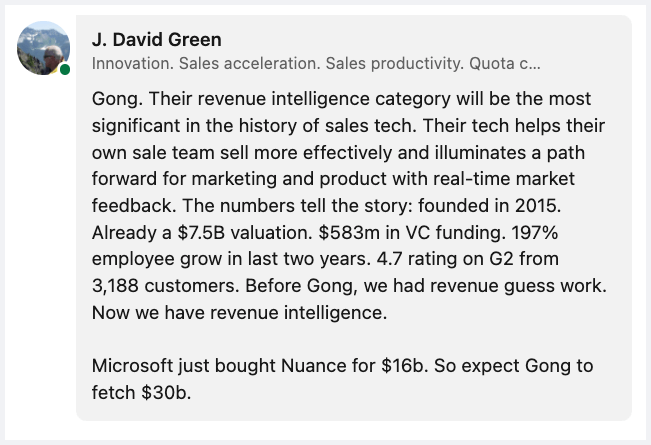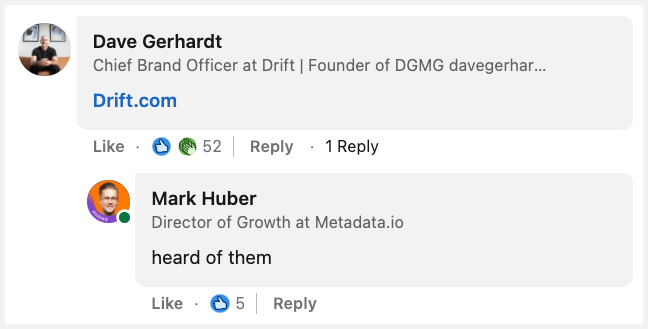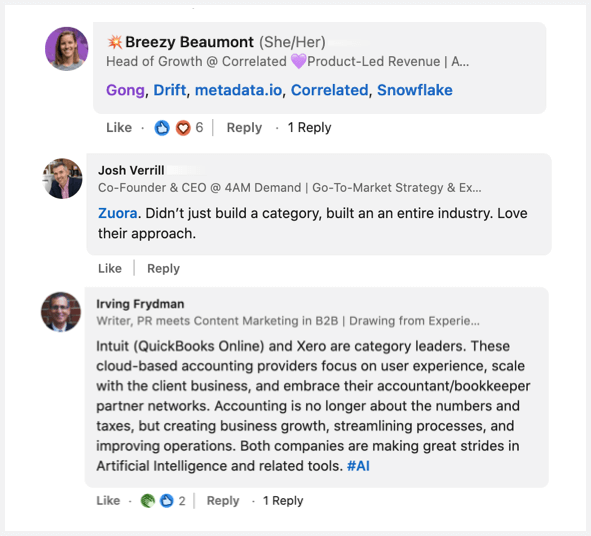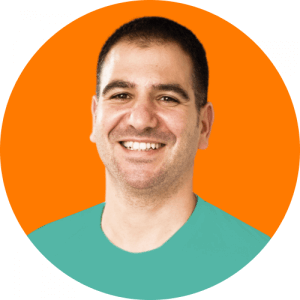10 Companies You Need To Study if You Want To Build a Category
“If a new founder or marketing team wanted to build a category, which companies would you tell them to study in B2B SaaS?“
I recently asked this question to my fellow colleagues and network of business professionals to see who they would suggest.
Their answers had a few obvious, recurring names. But I was happy to see some dark horses that also fit the mold.
Sometimes you need both a movement to happen in conjunction with category creation.
Take Salesforce for instance, which pioneered the SaaS movement and developed the first, arguably best SaaS CRM solution.
- Movement = Change from on-premise software to cloud/SaaS
- Category = SaaS CRM
The greatest category creators have defied the status quo in creating something that didn’t exist.
Others were smart for identifying new trends that were still hidden from others and rode and amplified/championed those trends for their categories (e.g. Gainsight for Customer Success).
The path of most resistance can pay off with countless lessons from formative experiences while in the trenches. Even when you don’t know exactly what you’re doing, you just have to learn from the best and then start.
Uncovering these hidden truths from those that did it successfully is the best kind of schooling.
Here’s a list of the top responses I got (and the top companies you need to study for category creation).
The top 10 companies to study for category creation:
1. Gong – “Revenue Intelligence”

Why study Gong: They found a way to arm sales leaders with insights through machine analysis of sales calls, and proved how a “reality” view of sales (without opinion) is possible.
Listen to Udi Ledergor from Gong on the B2B Category Creators Podcast
2. Hubspot – “Inbound Marketing”
Why study Hubspot: They saw how marketing was shifting. They knew technology was changing the way people shop, buy, consume, and interact with businesses. Hubspot made the expense of mass cold calling, outbound marketing, and traditional advertising a thing of the past with engagement tactics that drive consumers in.
3. Drift – “Conversational Marketing”

Why study Drift: In a world where buyers expect immediate responses through Slacking and texting, marketing forms were ripe for disruption. Drift made it possible to be available to customers who want to buy for instant, authentic interactions.
Listen to David Cancel from Drift on the B2B Category Creators Podcast
4. Asana – “Task Management”
Why study Asana: They found a way to enable teamwork without email, helping teams manage projects and tasks with transparency. It started with a belief that there had to be a better way for teams to work together besides the status quo of email overload and unproductive status meetings.
5. Slack (acronym for “Searchable Log of All Communication and Knowledge”)
Why study Slack: They are revolutionizing the way we communicate at work through transparency and centralization.
Before Slack, there was no way for employees to see what other people and teams were working on. Slack gave them that access in one centralized place to chat, share files, and exchange information without endless threads of email.
6. Terminus – “Account-Based Marketing”

Why study Terminus: Traditional B2B marketing started with a broad, untargeted approach to communicate with as many potential new customers as possible. Terminus flipped that on its head by inverting the traditional sales B2B funnel and focusing efforts on a smaller number of right-fit customers. Solidifying the account-based marketing (ABM) space.
7. Canva- “Graphic Design”
Why study Canva: A 30-year-old Australian female founder hated the barriers to designing software. So she took the entire design ecosystem and integrated it into one page, with the mission of making design accessible to all.
8. Gainsight – “Customer Success”
Why study Gainsight: Launching an entirely new department within organizations is no easy feat. But these founders knew a customer’s positive experience and success with your product was the holy grail.
Gainsight leveraged technology and big data to increase retention, reduce churn, and close more deals.
9. Dropbox “File Hosting Service”
Why study Dropbox: They answered a new, (annoying) problem for a digitally growing world. One where people carry a phone or two, maybe a tablet, but have files and photos trapped on multiple PCs, laptops, and mobile devices.
They took data spread across different devices and eliminated the need for a USB memory stick with a digital storage service.
10. Zendesk- “Helpdesk Software”
Why study Zendesk: They saw how customer tracking and incident reporting software was outdated and complicated to adopt. Zendesk reinvented customer service through a web-based helpdesk – a simple alternative to the complicated mess that customer service can be.
Honorable mentions
There were so many great examples that people brought up.

In the end, we chose the top 10, but here are some of the other honorable mentions that were included:
Atlassian, Bluescape, Celonis, Cloudflare, Correlated, DocuSign, Everbridge, Figma, Frontify, Intercom, Intuit, Metadata.io (much appreciated), Nektar, Netcore Cloud, Okta, Outreach, Rattle, Segment, SetSail, SiteZeus, Snowflake, Trello, Xero, Zapier, Zoho, and Zuora.
Learn how to successfully build your own category
Get insights from the founders and leaders at Drift, Gong, Gainsight, and more on the B2B Category Creators Podcast with Gil Allouche.




